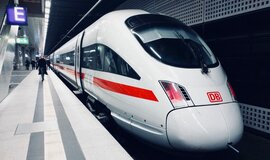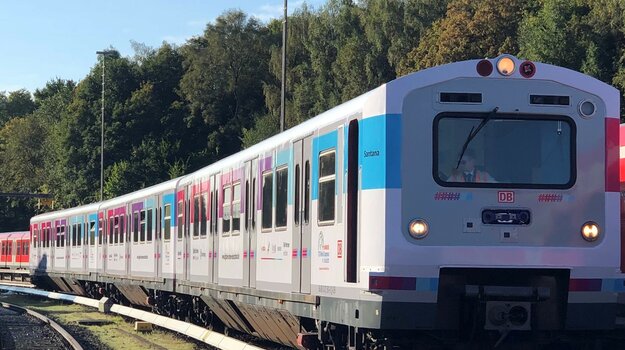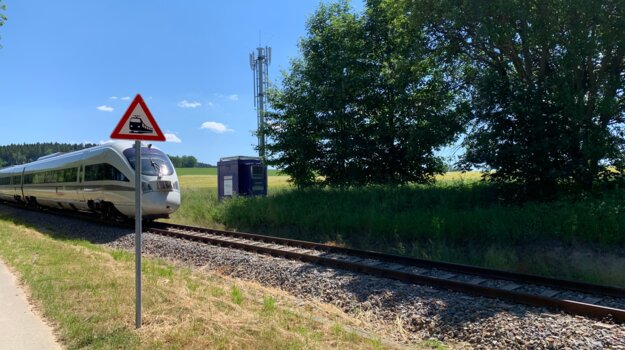
Artificial intelligence (AI) prototyping
Development of software prototypes for the planning and dispatching of train journeys, based on AI
The need for increased capacity in rail operations continues to grow. With a more powerful route network, Digital Rail for Germany can make a significant contribution to reducing CO2 emissions and achieving the Federal Government’s climate targets. This is why one of our focus points is the AI lighthouse project, ‘AI on the Train’ – the prototype implementation of software based on AI methods for the railway system of the future. The project is funded by the Federal Ministry for the Environment, Nature Conservation and Nuclear Safety (BMU) based on a resolution of the German Bundestag.
Optimised train services for better capacity utilisation
In today's network operations, humans in operation centres make a large number of local dispatching decisions – about waiting times, train sequences, track changes, rerouting and more. Together, these dispersed decisions determine the traffic flow on the overall network. With our artificial intelligence (AI)-based approach, we want to solve the highly complex optimisation problem with thousands of automated decisions across the network, made in the shortest possible time. With classical, analytical approaches alone, a problem of this size cannot be mastered in the short time required.
The AI project focuses on the planning and scheduling of train journeys, including the integrated planning of construction sites in the rail network. In this way, AI optimises traffic capacity and operational reliability, as well as the use of energy and resources.
AI needs a ‘digital twin’ of the railway world
One project goal is to develop a simulation environment. The German rail network will be paired with a ‘digital twin’ on which AI algorithms can be trained as realistically as possible. For this purpose, infrastructure and traffic scenarios based on both real data, and complicated artificial ones, can be simulated. The ‘digital twin’ also evaluates the performance of developed methods using various key variables – such as punctuality, travel time, kilometres travelled, energy consumption and braking activity.
AI for railway operations is still uncharted territory – this is set to change
In this project, we rely on various AI methods that will be used in the future railway system. Particular attention is being paid to ‘Deep Reinforcement Learning’. Right now, there’s no one solution that does justice to railway operations in all their complexity. The British company InstaDeep specialises in AI-based solutions for industrial problems and was selected through a tender process to support the project with its expertise and research.
Machine learning, especially the Deep Reinforcement Learning method, requires very high computing capacities. The learning tasks can be strongly parallelised and thus distributed over many computers. As the required computing capacity fluctuates greatly during the course of the project, a platform provided by InstaDeep is being used, which automatically provides and scales the necessary computing capacity in the Google Cloud Platform (GCP).
AI in the real-world rail network – when will it be ready?
Harnessing AI for the rail sector means a significant leap in innovation: from today's purely human-controlled systems, to automated timetable and construction planning and operational control. This creates up to 35% more capacity in the network – without building new tracks. Initial implementation of real-world railway operations is planned for the second half of the 2020s.




